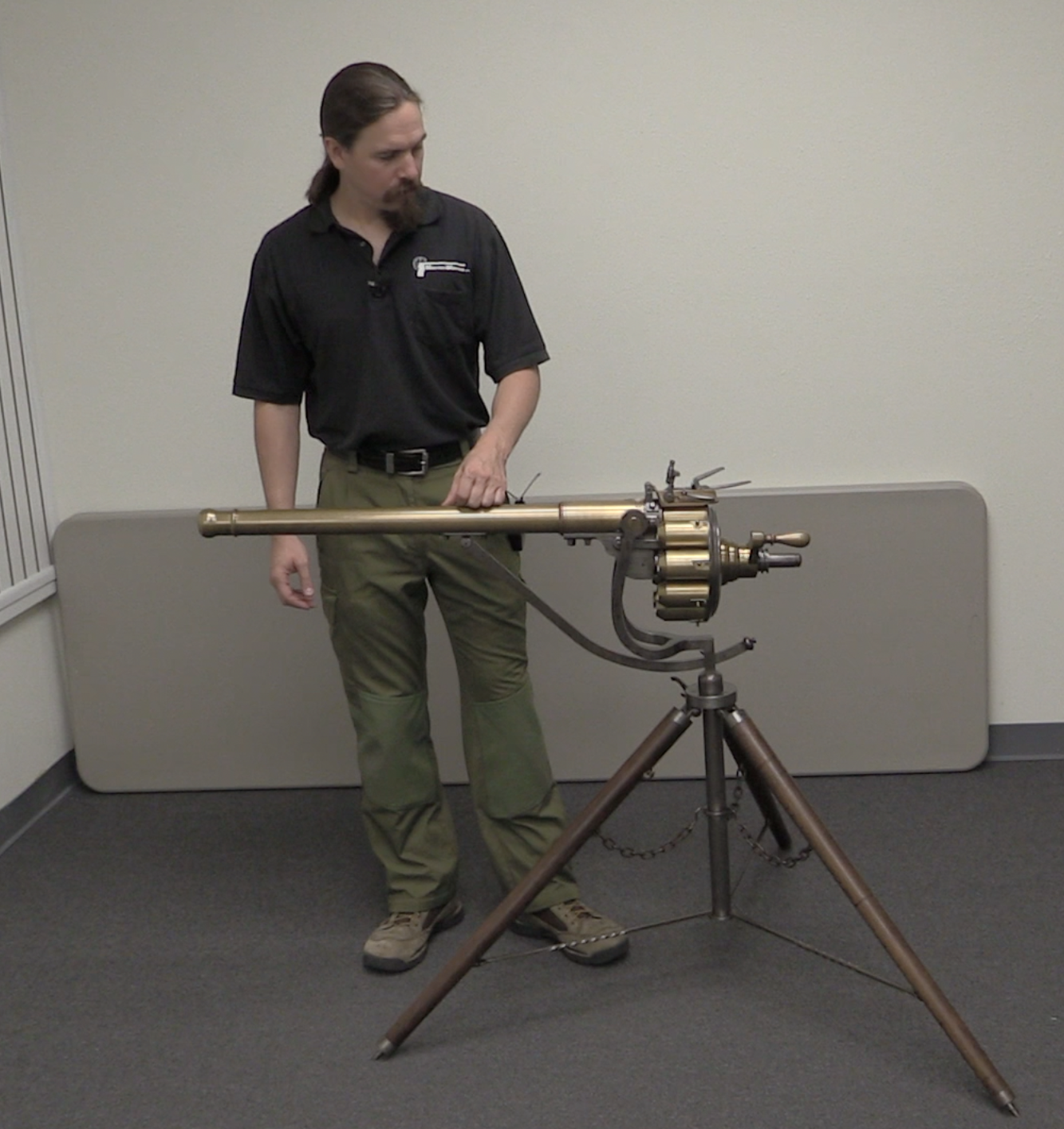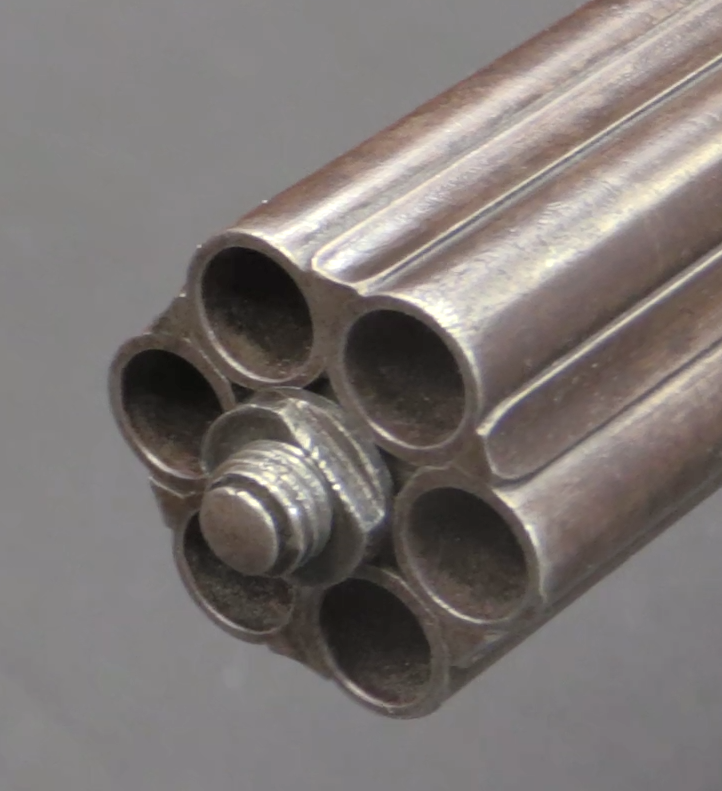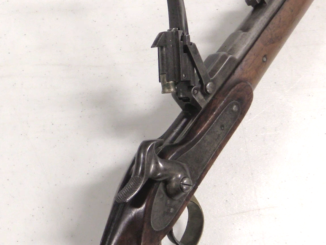The Enfield MkI had only been in service for two years when the MkII was adopted in March 1882 to resolve some of its problems (and reduce its cost). At the same time, a new cartridge was adopted (the MkIII) with a heeled .477” bullet – also in hopes of resolving some o the problems with the Enfield revolver.
The Enfield used a selective ejection system that was intended to dump empty cases but retain unfired live cartridges. It was a bit finicky, with the live rounds often moving during the ejection process and jamming the system up. The larger heeled bullets were hoped to help stop that – and they were also thought to provide better accuracy in the gun’s Henry type rifling.
Simplifications to reduce cost of the gun included:
Unchecked grips
Smooth holster guides
Simplified geometry on the lower frame and top strap
Semicircular front sight
Finally, a number of mechanical changes were made. Small elements were added to the clockwork to prevent cylinder rotation when not firing, and to lock the trigger and hammer when the loading gate was open. A second side plate screw was added to ease disassembly, and the grip attachment redesigned to use the lanyard ring as a screw to hold them in place. A fatal accident with an Enfield led to design of a hammer block safety that was intended to be universally retrofitted to guns in service, but many of the guns already sent out to far corners of the planet were never returned for this work.
In total, 13,102 MkII Enfield revolvers were made between 1882 and 1885, plus one gun each in 1886 and 1887. In 1887, the Webley MkI revolver was adopted to replace it, presumably much to the relief of Ordnance officers across the Empire.
For more info on the British service revolver cartridges and animation of the Enfield MkII mechanism, check out the C&Rsenal video on it:




Two interesting points about the Enfield revolvers.
First, Owen Jones, the patentee, had the first “full-length underlug” seen on a cartridge revolver;
https://americansocietyofarmscollectors.org/wp-content/uploads/2019/06/1984-B50-The-Presentation-Of-The-Owen-Jones-Derin.pdf
In his case, it was a hollow tube. The knurled cap at the end unscrewed, revealing a segmented cleaning rod and a multitool. You have to give him credit for originality in this, at least.
Second, due to the Enfield’s odd appearance, it often showed up on the old Wild, Wild West TV show (1965-69) in the hands of “foreign agents” from various Ruritanian countries. I suppose that Enfields were easier to come by than, say, Dimanceas, or maybe Stembridge Gun Rentals just actually had three or four in inventory.
clear ether
eon
That “British sailor” was actually an Army officer who was boarding a boat. His name and rank (I think Lieutenant) are stated in several of the reference books that I am too lazy to get up and retrieve. That he was an officer, and rumor had it, “connected,” led to a very public outcry to improve or replace the Enfield, and thus we have the very drop-safe Webleys, reliable rebounding hammer and all.
But… Didn’t it eventually kind of lead to something great; the Webley Mk whatever “You know the good ones, you can’t but think; what a splendid revolver design.” Took awhile, but they got there eventually.